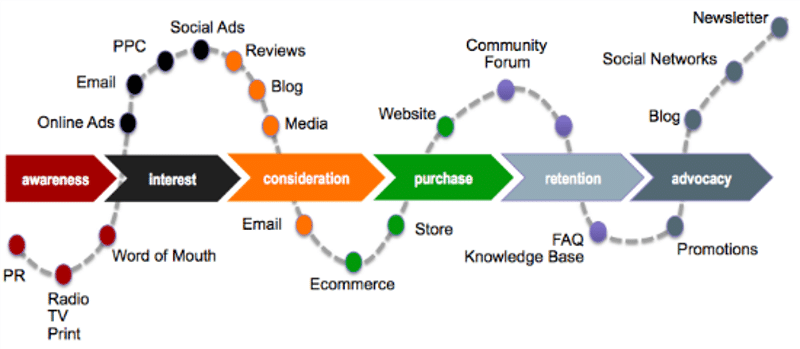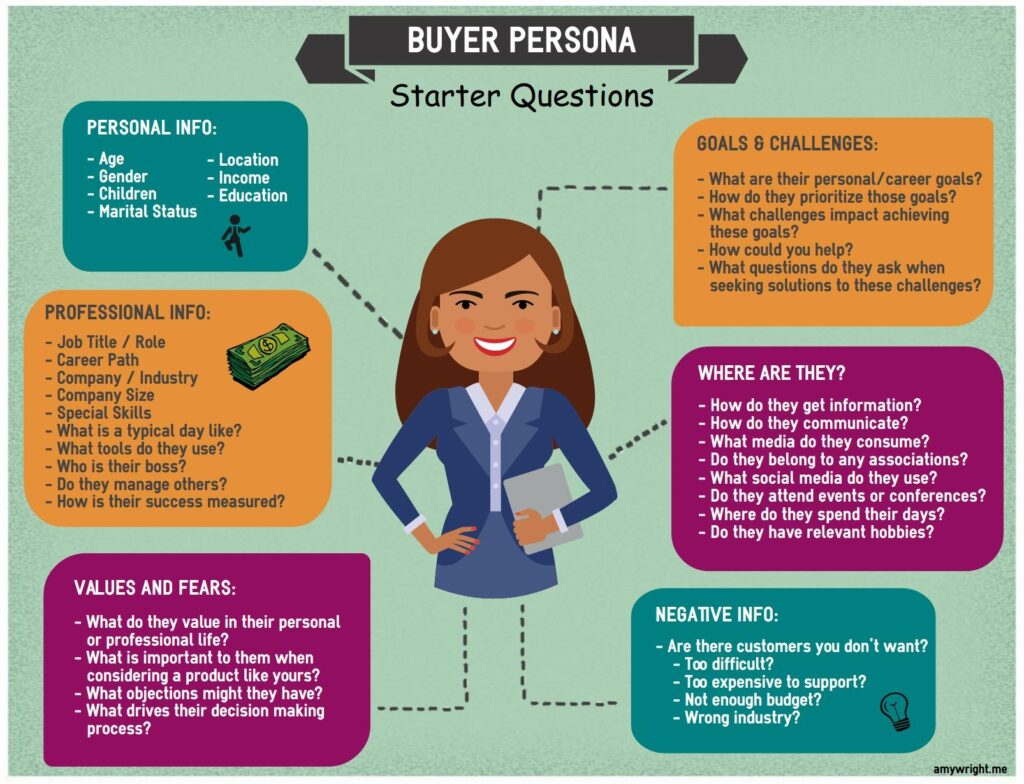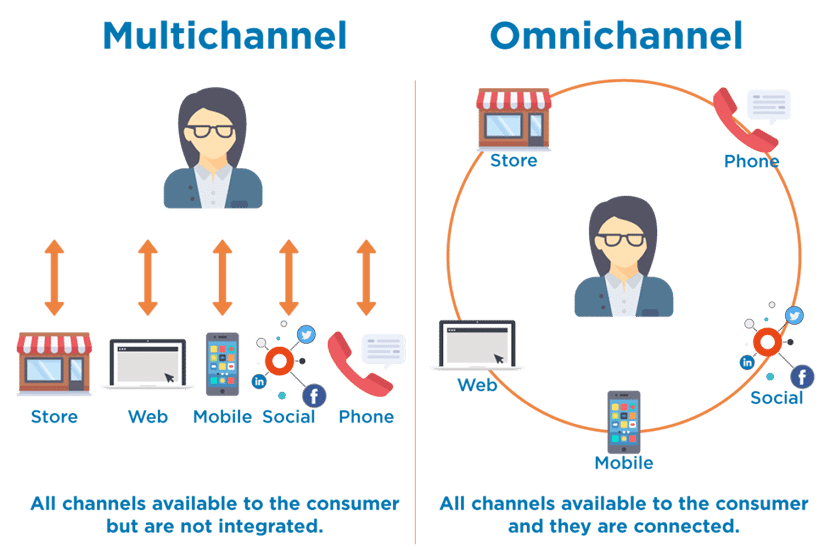The old adage that it’s about the journey and not the destination certainly applies when it comes to looking at your ecommerce customer journey. Creating a seamless experience for your customers leads them into your world, inspiring and engaging them with relevant and worthy touchpoints along the way, and ultimately reaching the end goal of gaining their trust and securing the sale.
What is customer journey optimization?
In order to create a great experience, you need to understand the steps your customers go through from the first touchpoint right the way through to the finish line. This doesn’t just mean pouring all your attention into conversions, but checking that from the first time someone encounters your brand (whether visiting the website, finding you on social media, or another means), you’re making every step a great experience.
A customer journey is a cumulative process. When a customer interacts with your brand or goes through the sales funnel, they won’t judge each step individually but will experience it as a whole. As an ecommerce brand you need to do the same and be aware of all the different possibilities to shape a customer’s opinion.

Optimizing this experience means mapping and analyzing the behavior of your customers, looking at the data, and walking through the journey yourself to see where tweaks and enhancements can be made.
Take a look at your assets
You can’t improve your customer’s journey if you don’t clearly understand all the steps they follow. The first thing to do is assess your existing assets. This means mapping out the customer journey in terms of the pre-purchase experience, the purchase experience, and the post-purchase experience.
Identify the critical phases of this journey and map out each of the steps so you have a clear picture of the route your customers take. Only by seeing all the stages laid out can you start to connect the dots.
Build a persona
Identifying who is interacting with your brand is another important element to mapping your customer’s journey. Creating a customer profile helps you to know who is well within reach, who is hanging on the periphery, and the customers that are beyond your reach. By identifying age, geography, interests, behavior, and spending brackets, you’re able to target and tweak certain touchpoints to speak directly to certain segments of your audience.
It’s also worth knowing who is referring you to their family and friends, who is spending longer browsing your site, and who is returning time and time again. When you know who you are dealing with, you’re better equipped to tailor an individual experience and make suggestions that work for each customer.
Know your metrics
Knowing your base metrics can help you to build a picture of what is working, and what’s not working. Some of the key metrics you should know and keep tabs on include:
- how many visitors access your site
- the content that’s clicked on
- which keywords are pulling people in
- where visitors arrive from (social, organic, other websites, etc).
In the consideration stage, you can work out which calls to action are working, which information requests are adhered to, and where the bounce rate hits.
Further along the line, you can follow key metrics such as:
- your shopping cart abandonment rate
- sales conversions
- word of mouth referrals
- social media mentions
- customer lifetime value.
Having the numbers in front of you can paint a picture and show you where your ecommerce customer journey climbs and declines.
Ask for feedback
Asking your current or past customers for their input can be important when tightening your ecommerce strategy. Your past customers have lived the experience and can provide valuable insight into the existing process.
Ask them to share how they found you, what steps they took along the way, what frustrations they faced, what they enjoyed the most, and whether they would recommend you. Social media can be a great way of curating this information through the likes of Twitter. You can also provide customer feedback forms on your website or emails as a simple way of gathering information and data.
Optimize your website
Your ecommerce site should be one of the first areas to optimize. This can be the main culprit when it comes to customer frustrations. First, you should make your site easily discoverable – consider your keywords to drive organic traffic to your site.
You also want to make sure your ecommerce site is linked to your social media pages and vice versa, and make sure all your product and service pages are optimized and have relevant information. It’s recommended to include photos and videos, technical information, reviews, and links to similar or alternative products. While detailed information is always welcome as part of the consideration stage, you want to make it visually attractive so not to overwhelm.
Streamline and speed
Speeding up your page load time is guaranteed to lower any frustration rates in customers. Not only are customers likely to bounce if your page speed is too low but Google also takes your page speed into account.
You also want to ensure that your site is easy to navigate, clear, and concise. Your ecommerce customers should be able to clearly find their way to what they want and reach the checkout page with as few hurdles as possible. The more hurdles, the more time there is to reconsider that potential purchase.
Finally, make sure your checkout process is streamlined. Don’t get caught up in making customers sign up or fill out additional forms, the process should be smooth, simple, and streamlined. Having more than one payment option also cuts out the risk of customers abandoning their shopping cart because they don’t have their credit card to hand.
Connect the channels
The omnichannel experience should be considered standard practice in the 21st century. The ideal situation is that your potential customer can pick up where they left off, regardless of where they are on the customer journey.
While your ecommerce site will have individual touchpoints, you should aim to connect them and create a seamless experience. One of the ways you can do this is to create omnichannel support. This means customer service extends beyond your ecommerce site and becomes available on social media channels, over the phone, and in store if you have a physical store.
Continue to personalize
Personalization should be at the heart of any customer journey. By personalizing the process whenever possible, you place the customer at the center of the journey and continue to strengthen bonds and build long-lasting relationships. There are simple ways you can personalize the journey, from offering personal product recommendations, to email marketing with tailored offers and suggestions based on browsing history.
Optimizing your ecommerce customer journey is rarely a finished product but should evolve with your business, your customers, and external factors. Laying a solid and seamless foundation is essential to curating an experience that inspires and engages, rather than stumbles and confuses your customers.
By understanding your journey, knowing your customer, looking at the data, listening to feedback, and streamlining and connecting the dots at every turn, you can ensure that all your customer touchpoints are optimized for success.



